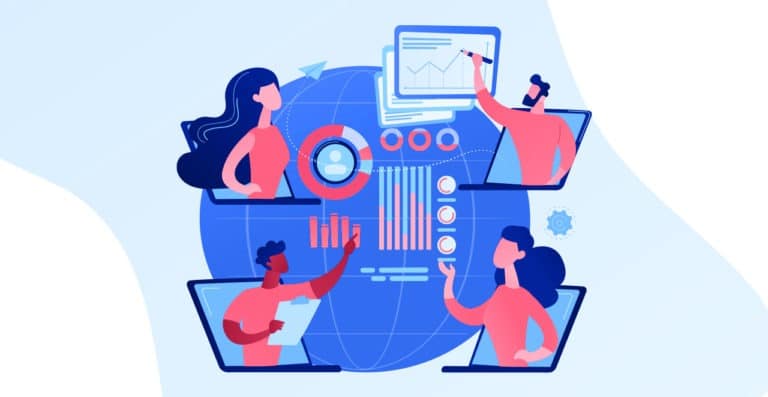
No matter who you are, where you live, or what you do, 2020 was a rough year. But for anyone in the consumer packaged goods (CPG) industry, figuring out how to compete in a demand-driven consumer packaged goods market has been a roller coaster of both uncertainty and opportunity.
Not even the most intelligent forecast models could have predicted an event like a global pandemic, and as we begin to look toward economic recovery and stability, the question remains: how can CPG companies continue to use resilient supply chain systems and forecasting models to stay competitive moving forward?
Here are three ways to help position your business to compete in a demand-driven consumer packaged goods market.
1. Adapt to the changing consumer
After 18 months of lockdowns, social distancing, and working from home, it’s hardly surprising that more people have become open to — and, by now, used to — buying more products online. But how else have consumer behaviors and preferences changed in the long term?
According to McKinsey & Company, even as social restrictions are relaxed, more consumers are expected to stay home. This is due to a combination of factors, such as wanting to save money, lingering safety concerns, and simply enjoying more home activities.
Instead of more cosmetics for a night out on the town, people might want more hobby and craft kits for a weekend in. Hygiene and wellness have been a hot topic in the past year and will remain in the public’s consciousness.
What does this mean for supply chain planning, forecasting, and integrated business planning? If demand-driven consumer packaged goods companies want to stay ahead of the competition, demand forecast models need to factor in not just historical data of customer behavior but also external factors that may have a major influence on behavior and preferences.
2. Embrace digital transformation
Digital transformation means more than just handling a few extra online orders. As the pandemic suddenly shut down supply channels to everyday products, demand didn’t always decrease in response. The most innovative CPG companies found creative ways to satisfy pent-up demand in areas that had historically weak sales through e-commerce.
Thanks to digital platforms, consumers could enjoy the experience of eating an ice cream sundae or sipping a craft cocktail — complete with garnish and ice cubes — in their living rooms. So how did they do it?
Companies like these were agile enough to assess the changing external situation and adjust their supply chain accordingly, even if it meant committing to a limited inventory — not all types of cocktails can be easily bottled and delivered. The supply chain was also set up to meet customer expectations, as people placing orders online expect quick delivery. By centralizing inventory in densely populated areas, companies could take orders in the morning and deliver just in time for happy hour or dessert.
3. Plan for more uncertainty
With so much historical data and computing power at our disposal, it’s never been easier to develop advanced predictive models. But there’s a catch. Never before have businesses experienced a situation that matches the COVID-19 crisis and today’s post-pandemic recovery.
The latest global economic disruptions have reminded everyone of the value of accurate forecasting. Moving forward, predictive models need to be updated to consider more possible scenarios while keeping the overall company strategy in focus.
As you look at each model scenario, you should be asking:
- Are the parameters of your model still valid today?
- Should you increase the moving average period of your model, perhaps from three months to six months?
- At what point are you willing to change your growth market priorities and re-evaluate new consumer behavior and demand?
- How quickly can the company invest in, and take advantage of, unforeseen opportunities as they present themselves?
Integrated Business Planning is Key to Your CPG Company’s Success
If your CPG business had already adopted integrated business planning (IBP) before the pandemic, then you likely saw the benefits of combining product and inventory reviews, supply chain planning, and financial planning to make sure your company is prepared for the unexpected through faster and more accurate forecasts. In fact, compared to the old model of business silos and data segregation, Ernst & Young found that companies with integrated business planning in place were able to achieve financial forecasts two to five times faster.
In other words, integrated business planning can help you, and your company, be more agile in responding to sudden external demand changes. This allows you to proactively adjust your supply chain planning today to meet the demands of tomorrow.
No one knows exactly what the next few years will bring, but we can be sure that consumers will expect more from CPG when it comes to demonstrating product cleanliness and hygiene. Consumers will also likely spend more time at home while demanding the same products and experiences traditionally associated with public establishments.
The most competitive CPG companies will understand how COVID-19 has changed the consumer landscape even after mass vaccinations and lifting social restrictions. At the same time, successful CPG companies will combine predictive modeling with strategic planning to ensure that, in any situation, there’s a plan for agility and success.
Learn more about how to stay prepared for even the most unexpected shifts in demand.


